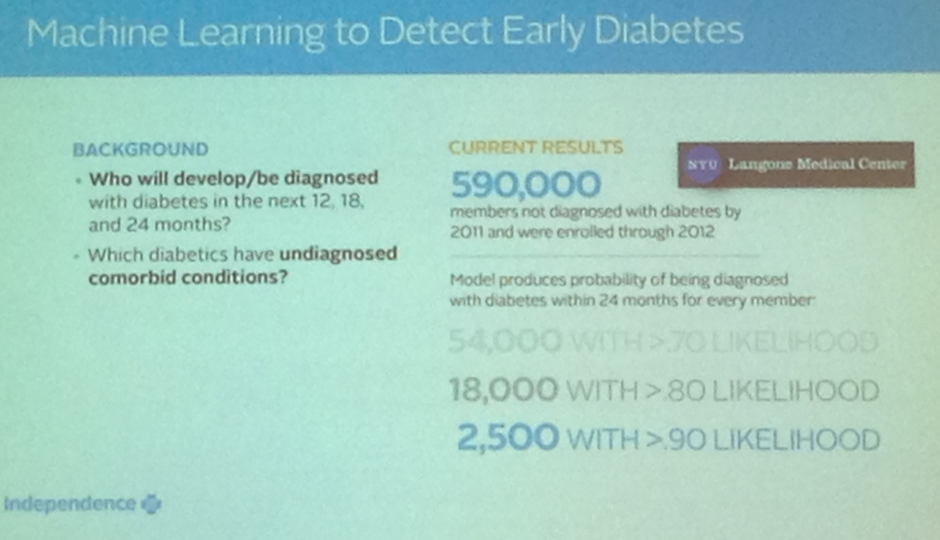Top Emojis in Philly … and More Stuff I Learned at Data Jawn
“Big Data” seems to be the buzzword of today’s business world. With so much information available, are companies analyzing the right data? Are they asking the right questions? How do they make sense of it all?
RJ Metrics attempted to provide some answers during its first annual Data Jawn — a day-long conference with speakers from a variety of different businesses.
Here are a few things I learned:
1. James Lind and Florence Nightengale used Data Analytics Long Before it Was a Thing.
Although data analytics is just coming to the forefront, RJ Metrics co-founder Jake Stein argues that it’s been crucial for years. The scurvy outbreaks of the 1700s were killing the British navy quicker than combat. But that all changed when James Lind performed (what some believe) is the first clinical test ever. He gave five different patients five different “remedies” and the group that ate lemons and limes showed significant improvement. His findings helped stem the tide of the deadly disease.
“This clinical trial is how we do clinical trials now,” said Stein. So by that rationale “he’s actually responsible for saving more lives than anyone else in the history of mankind — and nobody knows him. That’s fascinating.”
He also highlighted Florence Nightingale‘s research on hospitals and sick population’s in the 1800s — and her world-changing find that ventilation was a key determiner of sickness.
“Florence Nightingale spent years of her life collecting data without Excel,” said Stein. “That’s crazy.”
Data driven isn't new. #Dataviz by Florence Nightingale ca 1856 #datajawn pic.twitter.com/LPpwjPJxU0
— Stephen M. Harris (@smhmic) July 15, 2015
"Florence Nightingale spent years of her life collecting data without excel… Crazy." #datajawn
— elliface
Maycraft (@elliface) July 15, 2015
2. Philly’s Top Twitter Emojis Revealed
If you use Twitter, you’re probably noticing that more and more people are adding emojis to their tweets. What started out as a combination of a semicolon, dash and parenthesis to make a smiley face has turned into a yellow-faced explosion that can convey a multitude of emotions. Love them or hate them, they appear here to stay.
So two data scientists (Christopher Tufts and Lauren Ancona) created a mostly-for-fun side project called Twimoji, where they analyzed how Philadelphians use emojis on Twitter. In fact, it analyzed 28,799 location-enabled tweets from May 9 to July 11 from 7,363 unique users. The most popular emjoi? Face with tears of joy. (See the photo above for the top four.)
https://twitter.com/cassapedia/status/621417475511582720
3. Independence Blue Cross Uses Data to Predict Diseases
“I never spoke to an audience who was drinking before,” said Kimberly Siejak, director of customer information at Independence Blue Cross, to open her talk.
She told the beer-sipping audience that health care companies have been collecting valuable data for years but are just starting to use it in more meaningful ways.
In 2007, Independence Blue Cross began consolidating its treasure trove of data into workable chunks. Now, the company is using predictive modeling to help change patient behaviors. It will predict who will have costly hospital visits in the coming year.
“We have risk score for every member in our database,” said Siejak.
The health insurer is also predicting diabetes and which patients are likely to complain to Medicare about the company.
“Members are astounded that their health insurance company actually called them to see how they’re doing,” said Siejak.
Surprised more of the speakers haven't spoken in front of a drinking group. Glad they have this chance. #datajawn
— Cassandra Bailey (@cassapedia) July 15, 2015
Health insurance isn't exciting, but using data to predict who will be sick is some seriously cool stuff. #datajawn
— elliface
Maycraft (@elliface) July 15, 2015




